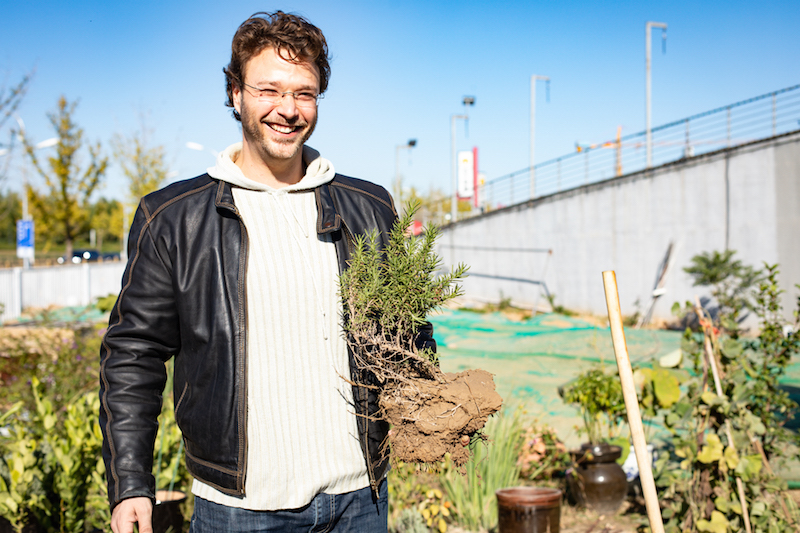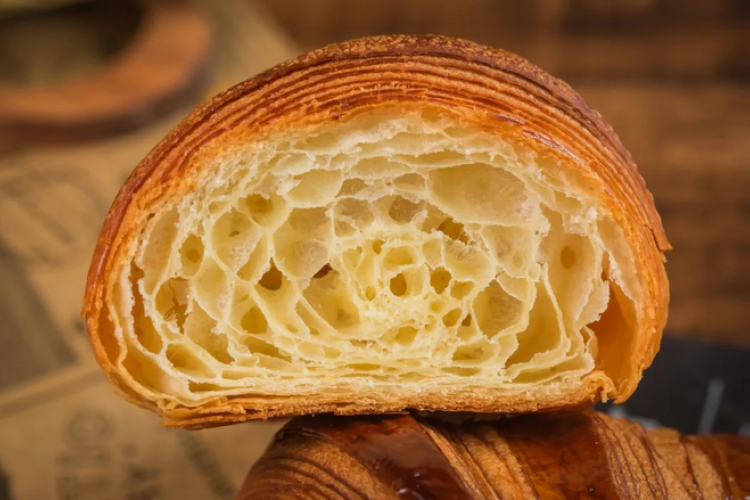Beicology: Rooting Out the Potential of Beijing's Soil
Encroaching desertification. Acres of concrete and steel. Beijing certainly isn't known for being a lush locale teeming with plant life. However, restauranteur Antoine Mansuy thought he might be able to change that, if only just a little, on a patch of land near his restaurant in the southern-Beijing suburb of Yizhuang.
Despite being environmentally conscious, Mansuy's aims weren’t entirely altruistic. The owner of The Roots Western restaurant wanted fresh bay leaves, oregano, rhubarb, and more, without having to import them (and hike up his prices in the process). He has also enjoyed gardening since he was a boy growing up in France, and experimenting with different ingredients in his grandmother’s wood stove kitchen. So when local authorities granted him the chance to mess around with the patch of dirt next to the mall that houses The Roots last year, Mansuy saw no downside, even if the poor soil seemed lacking in potential. “Plus, it gave us a chance to reduce our landfill waste by a solid 30 percent, using all our organic scraps to make compost and help revive that soil,” he adds.
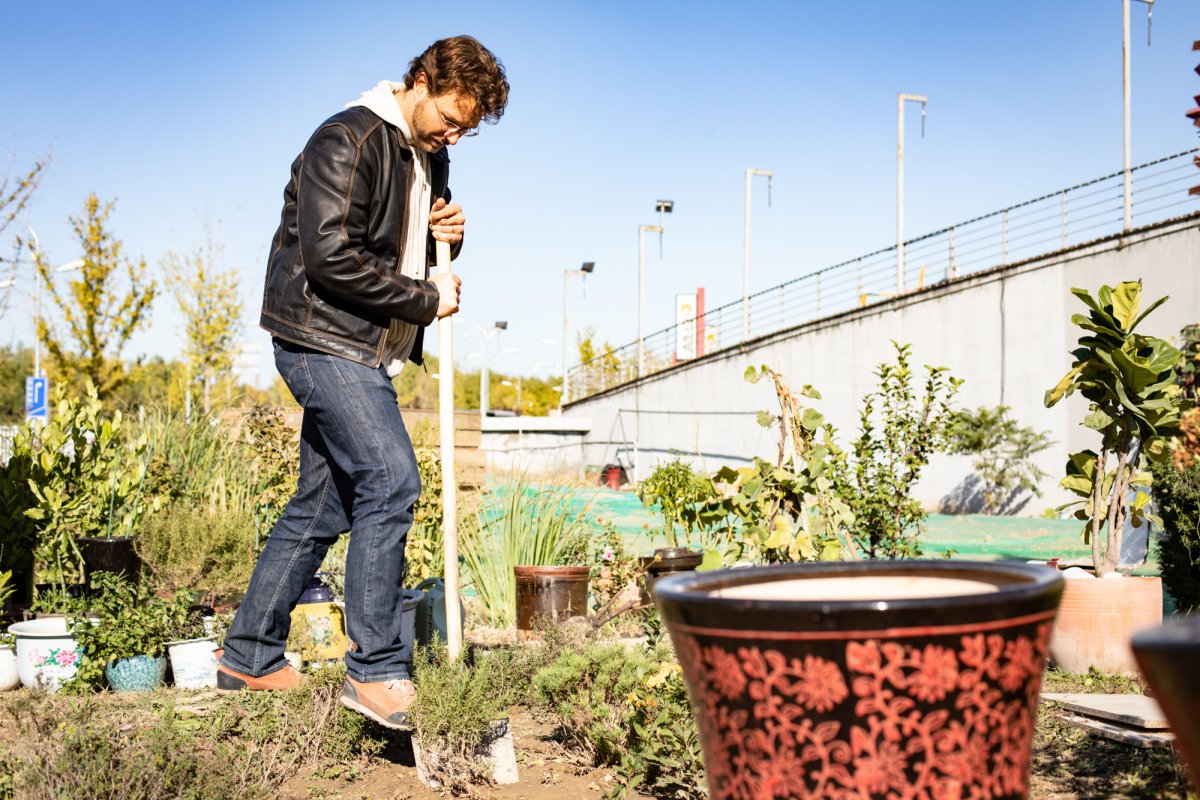
At first, he was disheartened to see a lack of insects and wildlife in the soil necessary to make it healthy and help his veggies and plants thrive. However, as the months wore on and the plants began to grow, he was shocked to see that once barren patch of ground abounding with “dragonflies, bees, butterflies, and all kinds of beneficial creepy crawlies, which I thought would take much longer to come back.”
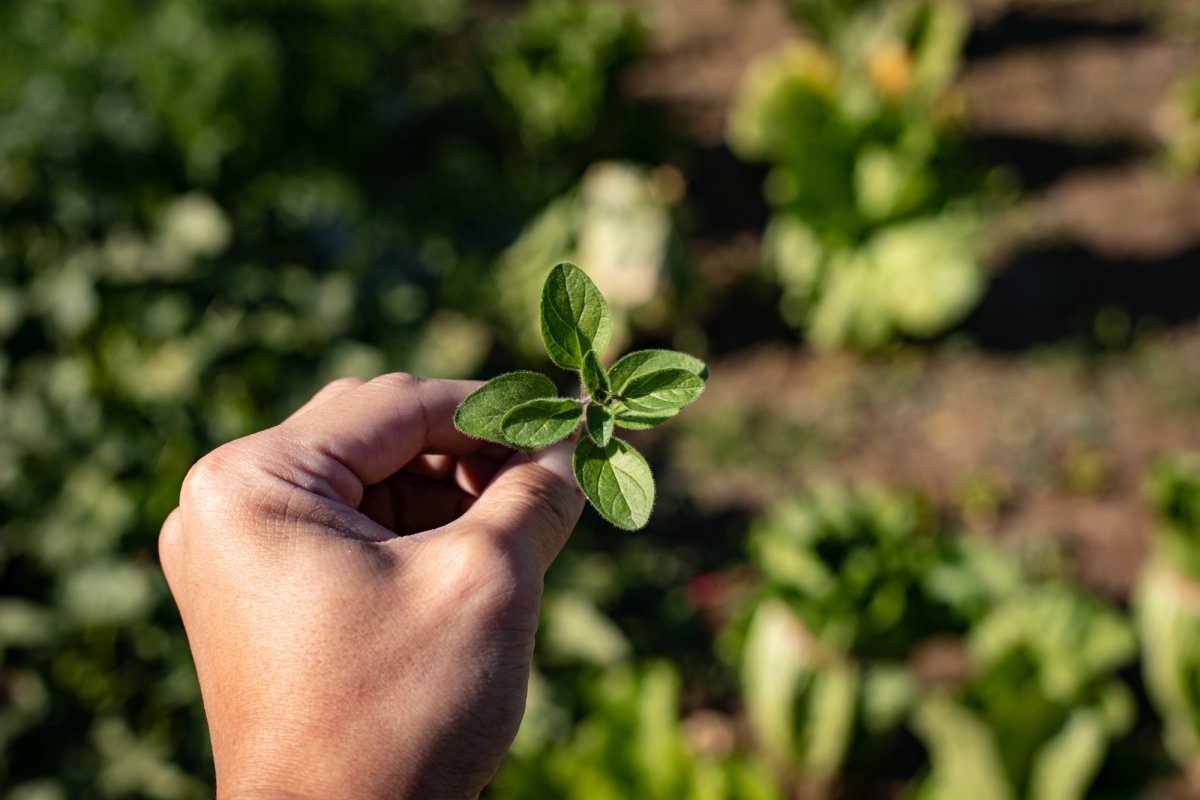
Thanks to those insects, which ward off disease and promote growth, his garden bloomed more rapidly than he could have imagined. “I didn’t expect the lemongrass to even survive, but now they’re as tall as me!” he exclaims, gesturing to the plant while standing in his leafy garden earlier this fall.

Yet the process was not without hiccups. As we talk, Mansuy also gestures beyond the borders of his garden, to a large patch of dirt covered in mesh beside the mall where his restaurant is located. Until recently, it was also part of his lush plot.
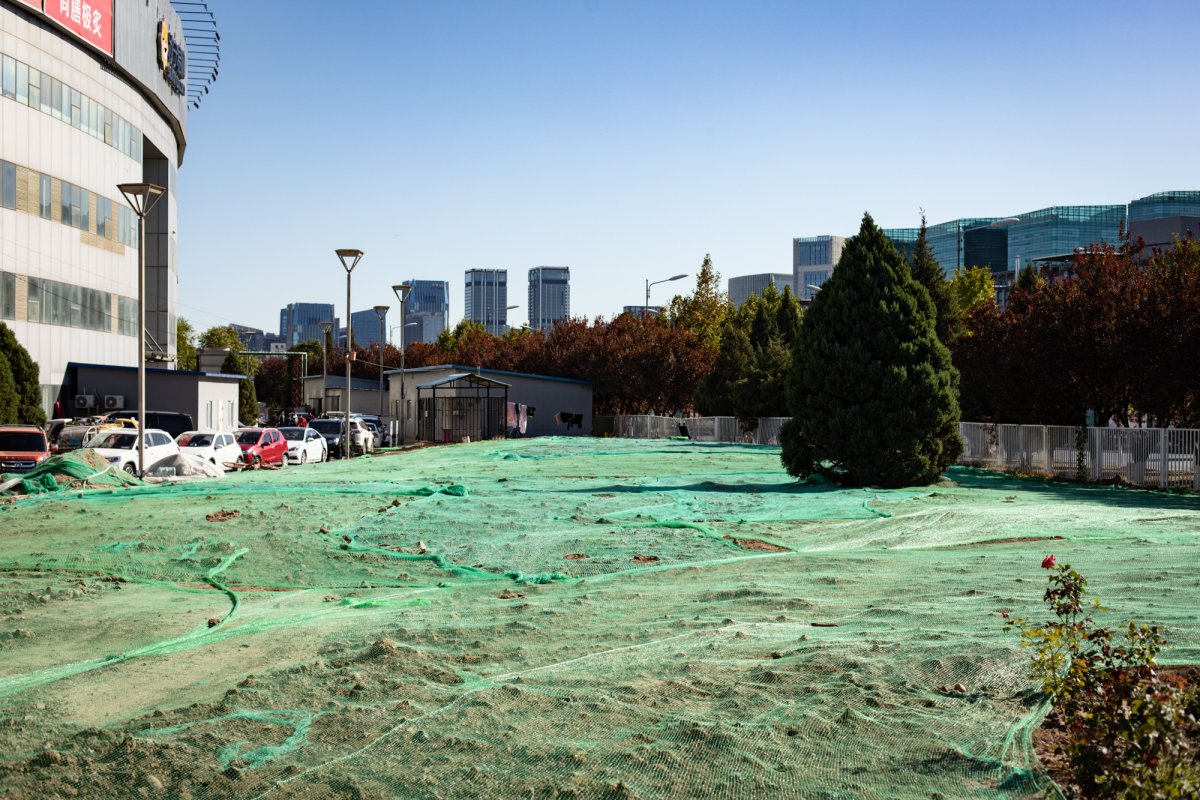
So what happened? On vacation back to France, Mansuy received a frantic call from his gardener, who told him the mall’s owners needed to put new water pipes in the ground, the path of which went straight through much of the garden and would surely destroy most of his hard work. Instead of panicking, Mansuy just remembers telling his staff to “Save the expensive bay leaves! They’re the money plants!”
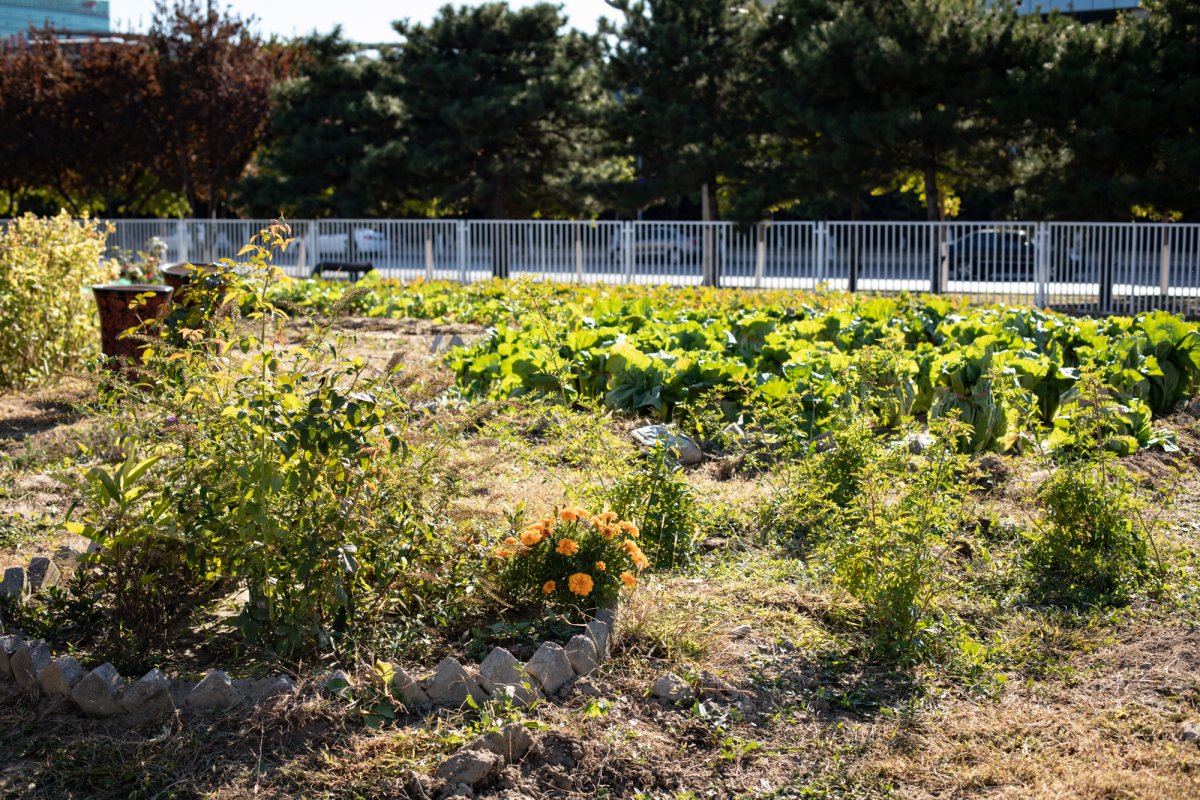
Even though 80 percent of the garden got destroyed, including all the wildflower patches and bushes that housed the insects and the birds, the efforts on soil regeneration were successful, and since then Mansuy has been glad to see what remains of the garden not only survive but continue to thrive.

He also remains optimistic because “schools, malls, and other facilities around Beijing can try this urban gardening technique and have gardens of their own, and reduce their waste in the process. Imagine clinics having benches and flower beds instead of dirt patches where people are not even allowed to walk in. Wouldn’t that make the visits to the hospitals much more pleasant for the kids? They’d come back twice as often.”
“It, of course, won’t save the world or anything,” Mansuy says with a smile. However, if he can help spread the word about this technique and foster the greater appreciation for the environment and the outdoors, it’s more than worth the hard work and getting a little dirt under his fingernails. Aside from that, he adds: “So we know having plants around you at work and at home makes you feel safer, more grounded, but there are studies that show that even a silly green plant in a little pot at the office increases clerks’ creativity by 15 percent!. And I think that would be hugely beneficial for people in any soul-grinding, concrete jungle modern megacity."
Catch up on all of our environmental coverage, here.
More stories by this author here.
Email: kylemullin@truerun.com
Twitter: @MulKyle
Instagram: mullin.kyle
Photos: Uni You

